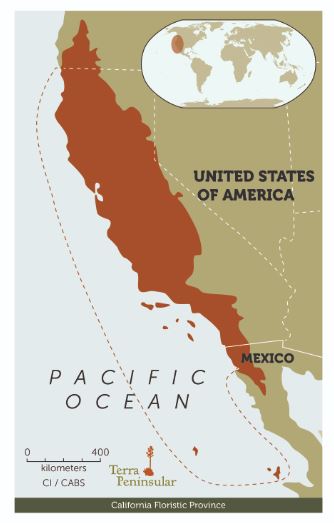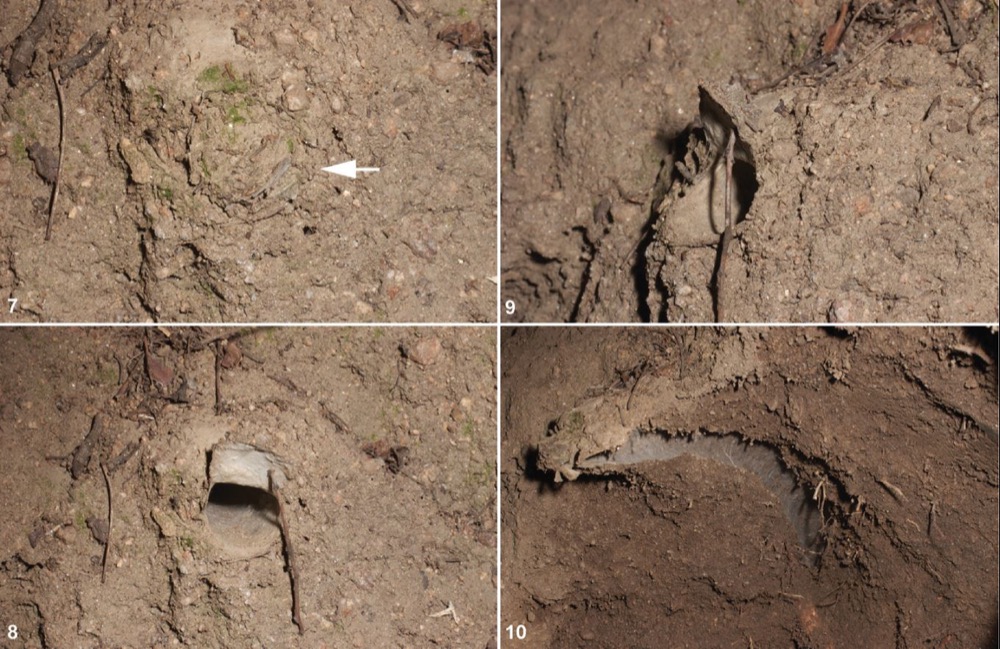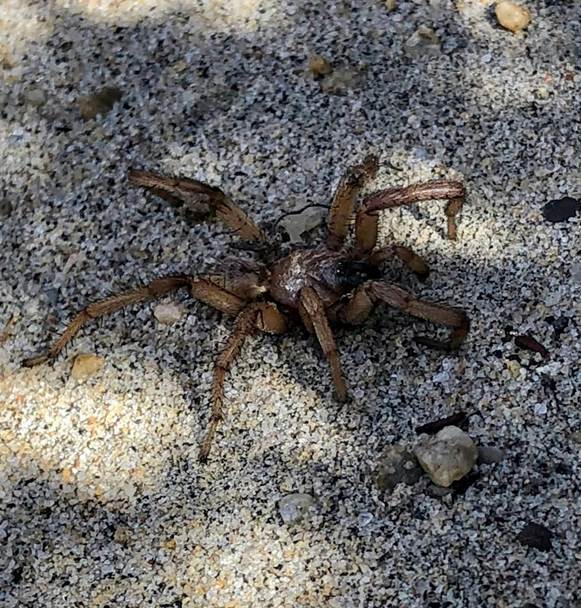California is home to a large variety of these trapdoor spiders. In a recent study, Jason E. Bond of Auburn University renamed, described, and classified 33 of the 40 species found in the California Floristic Province, a biodiversity hotspot that covers coastal California, Southern Oregon, and a bit of Northern Baja California, Mexico. These new names were the result of re-tracing the group’s phylogenetic tree, or the relationships of species through generations. The genus Aptostichus has new names to become familiar with, and Mr. Bond has had some fun with the naming process.

Photo courtesy of terrapeninsular.org – this map describes the area known as the California Floristic Province.
Trapdoor spiders get their name from the trap-like burrows they construct. Rather than a web, these spiders construct a trap door on top of their burrows that are hinged with silk. As ambush predators, these spiders wait behind their trapdoor, usually at night, until prey comes close enough to capture. Because of their cryptic lifestyle, trapdoor spiders can be hard to locate. Many trapdoors are covered with plant debris, which make them difficult to distinguish from surrounding substrate. Furthermore, many of the females lack obvious identifying features that distinguish them from males. For instance, the only way to find female spiders in the desert is after winter rains when the spiders clean out their burrows, leaving small piles of sand next to the burrow opening.
 Photo courtesy of Jason Bond, Auburn University – the comparison between a female trapdoor spider burrow closed (top left) and open viewed from different angles.
Photo courtesy of Jason Bond, Auburn University – the comparison between a female trapdoor spider burrow closed (top left) and open viewed from different angles.Jason E. Bond has worked tirelessly to collect and research this group of spiders. He has had the task of renaming them, and in doing so has had some fun with it. We now have the Aptostchus stephencolberti (in homage to comedian Stephen Colbert) and Aptostchus barakobamai (a tribute to former President Barack Obama). Some of the names have more context than just celebrity. Aptostchus dorothealangeae is named after Dorothea Lange, the photographer who documented the Great Depression and migrant workers in California’s Central Valley. This species lives in Kern County. Another from Kern County is Aptostchus chavezi named after César Chávez and the work he did there. Aptostchus bonoi is in Joshua Tree National Park and named after U2’s The Joshua Tree album. Aptostchus muiri is found in Yosemite National Park and named after John Muir who was instrumental in protecting Yosemite Valley and the founding of the National Park Service.
Here at Cabrillo National Monument we have one of these trapdoor spider species, as well. And yes, it is renamed Aptostchus cabrillo. This spider is endemic to the park, meaning it can be found only at Cabrillo National Monument and nowhere else in the world. Even with the new name, our park biologists continue the work of protecting and preserving all the species within the park. So keep exploring friends, you may never know what you may see out there.
 NPS Photo/Nicole Ornelas – the Cabrillo trapdoor spider Aptostchus cabrillo.
NPS Photo/Nicole Ornelas – the Cabrillo trapdoor spider Aptostchus cabrillo.References:
If you would like to read Jason Bond’s original paper, visit:
https://www.ncbi.nlm.nih.gov/pmc/articles/PMC3560839/
